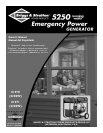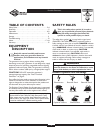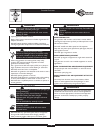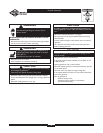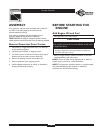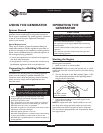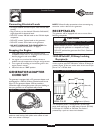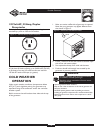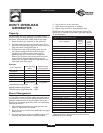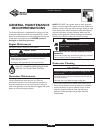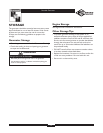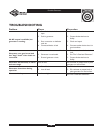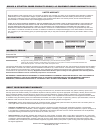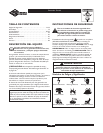
Portable Generator
8
120 Volt AC, 20 Amp, Duplex
Receptacles
Each duplex receptacle (Figure 4) is protected against
overload by a push–to–reset circuit breaker.
Use each receptacle to operate 120 Volt AC, single–phase,
60 Hz electrical loads requiring up to 2,400 watts (2.4 kW)
at 20 Amps of current. Use cord sets that are rated for
125 Volt AC loads at 20 Amps (or greater).
COLD WEATHER
OPERATION
Under certain weather conditions (temperatures below
40°F [4°C] and a high dew point), your generator may
experience icing of the carburetor and/or the crankcase
breather system.
Build a structure that will enclose three sides and the top
of the generator:
1. Make sure entire muffler-side of generator is exposed.
Note that your generator may appear different from
that shown in Figure 5.
2. Ensure a minimum of two feet clearance between open
side of box and nearest object.
3. Face exposed end away from wind and elements.
4. Enclosure should hold enough heat created by the
generator to prevent problems.
Figure 4 — 120 Volt, 20 Amp Duplex Receptacle
Figure 5 — Permanent Cold Weather Shelter
Wind
• Operate generator ONLY outdoors.
• Keep at least 2 feet of clearance on all sides of generator for
adequate ventilation.
• DO NOT operate generator inside any building or enclosure,
including the generator compartment of a recreational vehicle (RV).
• Remove generator from shelter when temperature is above
40°F [4°C].
Running generator gives off carbon monoxide,
an odorless, colorless, poison gas.
Breathing carbon monoxide will cause nausea,
fainting or death.
DANGER



